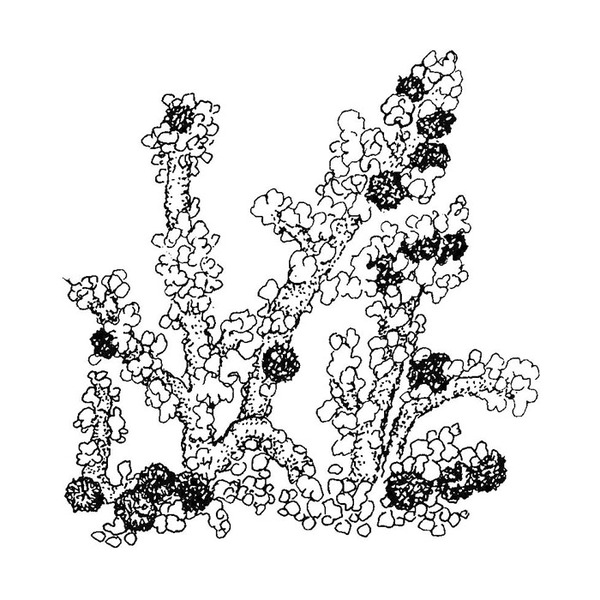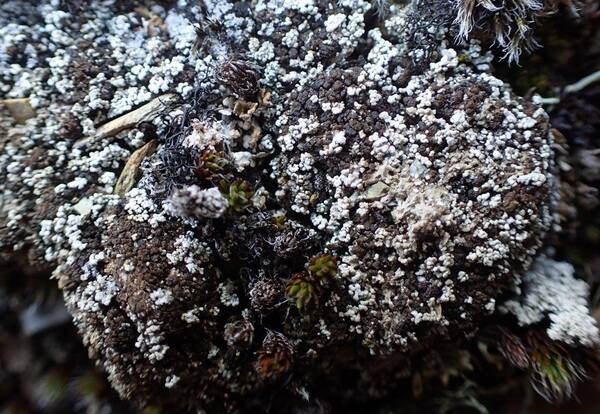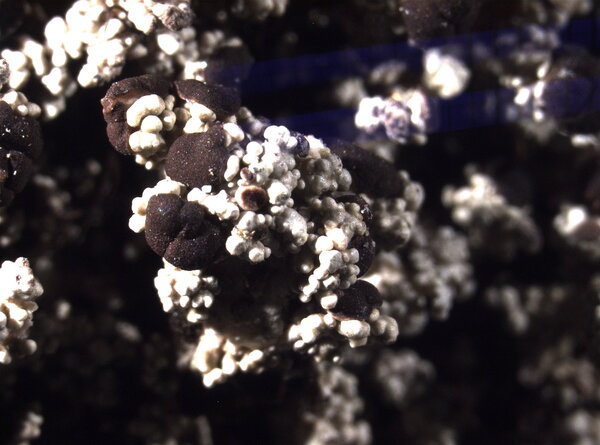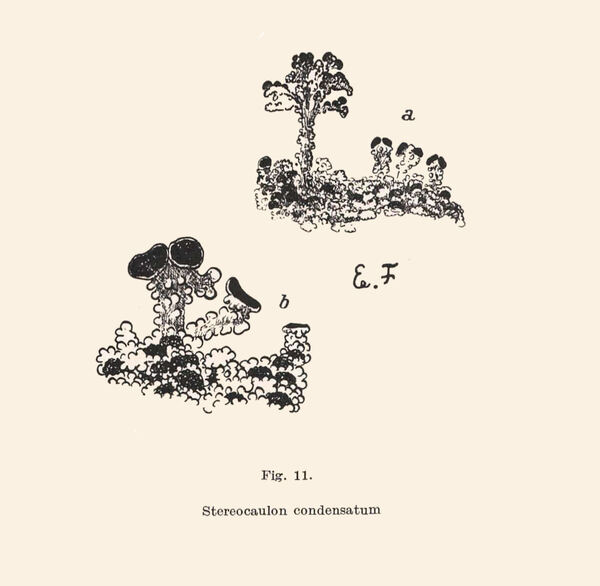Stereocaulon condensatum Hoffm.
Deutschl. Fl., 2: 130, 1796.
Synonyms: Stereocaulon acaulon Nyl.; Stereocaulon condensatum f. septentrionale H. Magn.; Stereocaulon condyloideum Ach.; Stereocaulon paschale var. condensatum (Hoffm.) Schaer.
Distribution: N - Ven, Lomb (Rivellini & Valcuvia 1996, Gheza & al. 2015, Gheza 2015), Piem (Isocrono & al. 2004), VA (Piervittori & Isocrono 1999), Lig (Brunialti & al. 2001).
Description: Primary thallus persistent, of granular to incised-elongate phyllocladia with abundant interspersed cephalodia, forming a crust. Pseudopodetia rarely present, with a solid cartilaginous axis of parallel hyphae surrounded by a lax medulla, ascending to erect, terete, up to 1.5(-2) cm tall, 0.5-1 mm thick, simple or sparingly branched, tomentose at least in upper parts. Phyllocladia small, wart-like to incised, horizontal, greyish white to beige. Cephalodia abundant, dark reddish brown to blackish brown, with a scabrid surface, 1-1.5 mm across, containing Stigonema, located between primary thallus granules or at the base of pseudopodetia. Apothecia rare, dark brown, rounded, without a thalline margin, terminal, 1-2 mm across. Proper exciple brown in outer part, colourless within; epithecium brown, K-; hymenium colourless; paraphyses simple, slightly thickened above, with a dark cap; hypothecium colourless. Asci 8-spored, cylindrical-clavate, with a K/I+ blue outer layer and apical dome, and a central, K/I+ darker blue tube, Porpidia-type. Ascospores mainly 3-septate, hyaline, fusiform, 22-40 x 2.5-3 µm. Pycnidia dark, immersed in the basal phyllocladia. Conidia filiform, straight or slightly curved. Main photobiont chlorococcoid. Spot tests: K+ yellow, C-, KC- or KC+ violet, P- or P+ faintly yellow, UV+ blue-white. Chemistry: atranorin and variable amounts of lobaric acid. Note: a cool-temperate to boreal-montane, circumpolar lichen found on sandy to gravelly, often disturbed soil in open situations, often associated with Pycnothelia papillaria; probably restricted to the Alps in Italy, with a few dealpine stations in the western upper Padanian Plain (Lomellina). An earlier record from Campania (Nimis 1993: 673), being dubious, is not accepted here
Growth form: Fruticose
Substrata: soil, terricolous mosses, and plant debris
Photobiont: green algae other than Trentepohlia (primary); cyanobacteria, filamentous (e.g. Nostoc, Scytonema) (secundary, e.g. in cephalodia)
Reproductive strategy: mainly sexual
Pioneer species
Commonnes-rarity: (info)
Alpine belt: absent
Subalpine belt: rare
Oromediterranean belt: absent
Montane belt: extremely rare
Submediterranean belt: absent
Padanian area: absent
Humid submediterranean belt: absent
Humid mediterranean belt: absent
Dry mediterranean belt: absent
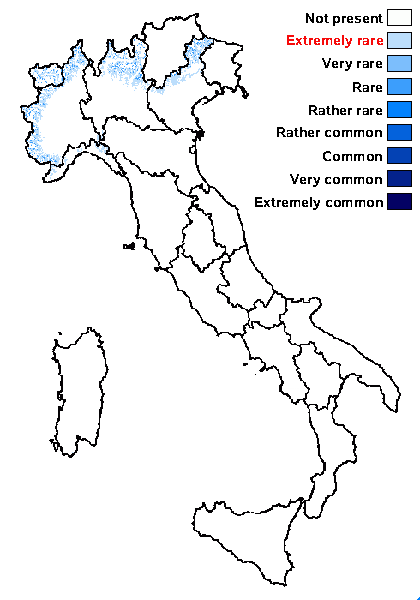
Predictive model
Herbarium samples
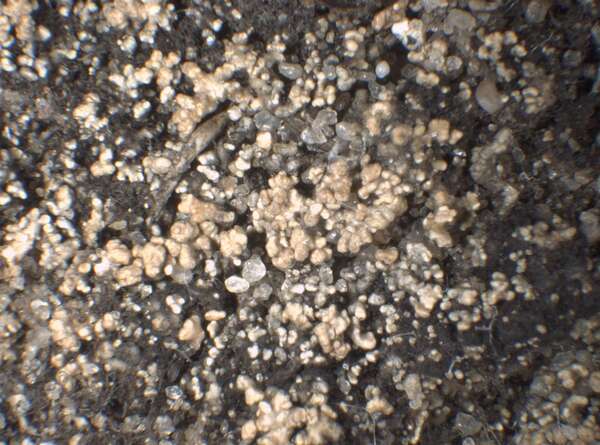

P.L. Nimis; Owner: Department of Life Sciences, University of Trieste
Herbarium: TSB (15131)
2003/03/06
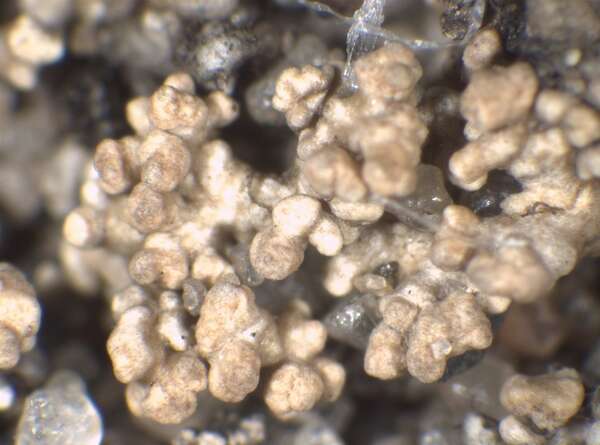

P.L. Nimis; Owner: Department of Life Sciences, University of Trieste
Herbarium: TSB (15131)
2003/03/06
Growth form: Fruticose
Substrata: soil, terricolous mosses, and plant debris
Photobiont: green algae other than Trentepohlia (primary); cyanobacteria, filamentous (e.g. Nostoc, Scytonema) (secundary, e.g. in cephalodia)
Reproductive strategy: mainly sexual
Pioneer species
Commonnes-rarity: (info)
Alpine belt: absent
Subalpine belt: rare
Oromediterranean belt: absent
Montane belt: extremely rare
Submediterranean belt: absent
Padanian area: absent
Humid submediterranean belt: absent
Humid mediterranean belt: absent
Dry mediterranean belt: absent

Predictive model
| Herbarium samples |


P.L. Nimis; Owner: Department of Life Sciences, University of Trieste
Herbarium: TSB (15131)
2003/03/06


 Index Fungorum
Index Fungorum
 GBIF
GBIF

